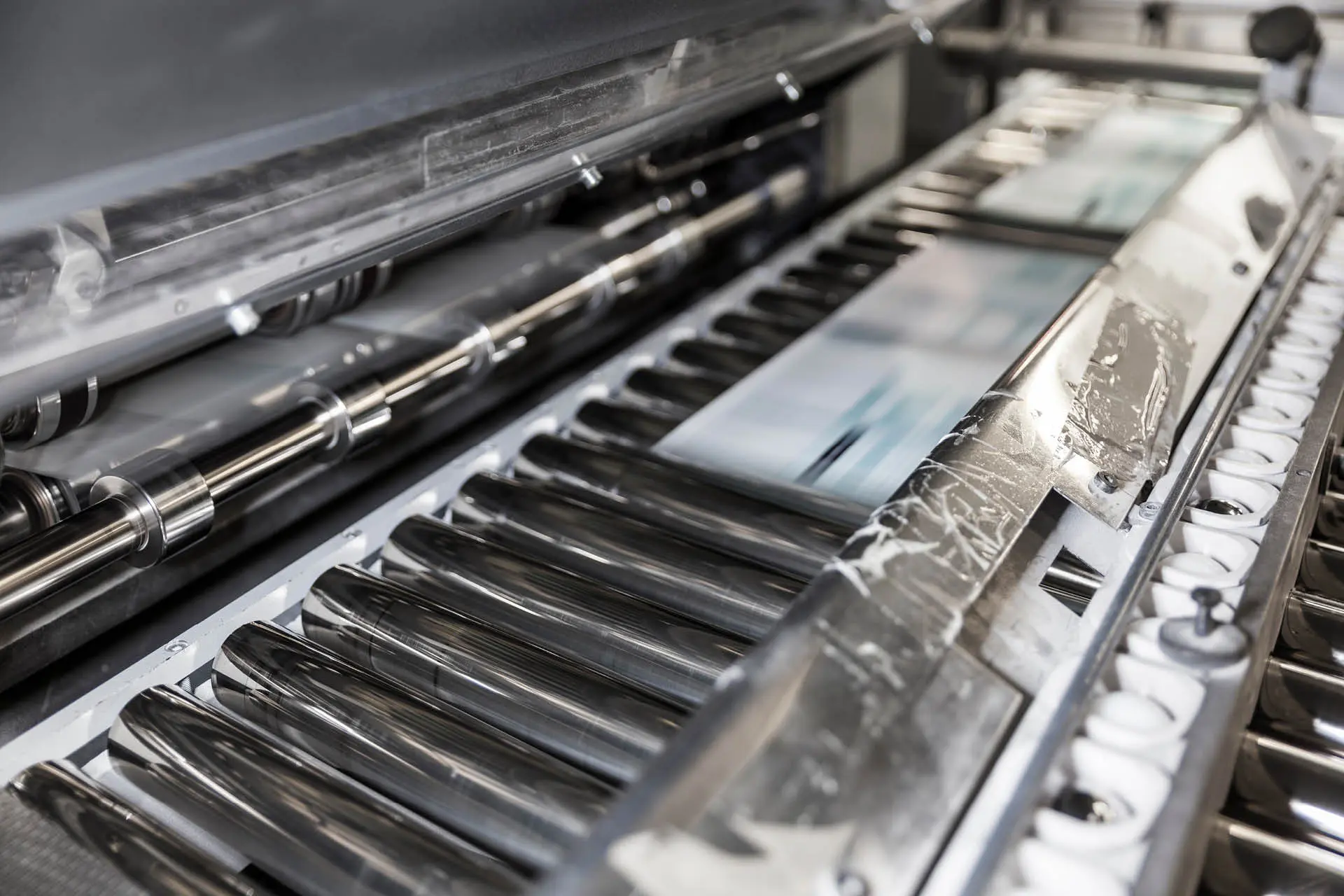What is lithography?
As technology surges forward, there are more and more commercial printing options available. Lithographic or litho printing and digital printing are the two most common.

As technology surges forward, there are more and more commercial printing options available. Lithographic or litho printing and digital printing are the two most common.
The term lithography refers to a form of printing discovered in Germany, in the late 18th century.
The word lithograph comes from the Ancient Greek λίθος, lithos, meaning ‘stone’, and γράφειν, graphein, meaning ‘to write’. The Ancient Greeks carved stencils into stones and this technique would eventually be called offset lithography printing.
In around 1796, Alois Senefelder, an unknown playwright from Bavaria, discovered he could duplicate his scripts by writing them in greasy crayon on slabs of limestone, and then printing with rolled-on ink. Using this method, he was able to quickly create many, many copies of identical print, without significant reduction in quality. Lithography, sometimes called lithographic printing, or litho for short and the art world was ready to embrace it.
The process of creating an image through a printing plate means it is possible to achieve very high resolutions. This results in a very high-quality print. In simple terms, modern lithography, works in a similar way to an office printer. Images and text are etched by laser onto a coated aluminium printing plate, the modern version of stones. The plate is placed on the litho press, which is made up of rollers. As the plate passes through the rollers, it collects the ink in layers. The layers combine to create the final colour image, which is transferred to a rubber blanket.
The lithographic process is based on the repulsion of oil and water, offset printing uses a planographic (flat) image carrier, on which the print image takes ink from the ink rollers, while the non-printing areas attract fountain solution (a water-based film), keeping them ink-free.
This process can be used to print on paper, cardboard but it’s also suitable for creative papers such as GF Smith, and a range of unusual surfaces, including wood, metal and plastic because litho presses can accommodate heavier weights of print material.
The litho printing method dries the ink much quicker, which better preserves the colour and detail of the images and text for exceptional resolution, printed to last.
Many of our customers opt for our exceptional digital printing services, but there are times when our lithographic printing services are what we’d recommend, and the results never disappoint.
Our state-of-the-art Heidelberg presses create rich, accurate colours with sharp typefaces and high definition details. We can print up to 5 colours, plus an aqueous coater, on stocks ranging from 60gsm paper, to 700 micron board. Image control is via a high-end colour management system that scans the entire printed surface, ensuring colour accuracy, every time.
It’s true that the lithographic printing process is not the service to choose for short runs. You should probably use digital if that’s your print requirement. Generally, for medium to long print runs, litho printing is right for your print job. Whatever you want to print – from packaging to prospectuses, from folders to promotional literature – litho printing provides the best value for high volume quantities and high end finishes.
Our Heidelberg Speedmaster CX102 print press has the flexibility and capacity to produce large volumes, and quickly. Stats from Heidelberg rates Galloways at Number One, with the most efficient Heidelberg Speedmaster CX102 print press in the world and we’re continuously in the top ten of more than 110 presses worldwide. That’s something we’re really proud of.
Our lithographic printing presses provide tangible benefits in cost control, making it possible to offer you a wide range of print options based on your budget. Unlike the digital printing processes, lithography uses plates (we create around 14,000 of these plates every year; all recyclable). While this means that the initial production set-up costs of lithographic printing is greater than digital printing, economy of scale takes over. Once the job is on the press, the unit costs reduce. For large quantities of print products, litho printing can often be more cost-effective than digital print.
Lithographic printing does have some disadvantages. Plates cannot be changed once set into place. Any changes would require new plates, so personalisation is not a typical option with lithography.
Using a lithographic printing press is a skilled job, requiring balancing the weights of ink correctly, and in the right order, to achieve the right colours, and getting the material feed right. Some presses can be slower to run jobs than digital printing presses, but once our Speedmaster is set up in just six minutes, high quantities of high-quality print are guaranteed. It only needs another six minutes for job changeovers, so you will never be waiting long. It’s also cutting waste (achieving less than 1% wastage) and minimising makeready time. It has been proven to be one of the most efficient print presses in the world.
Contact our friendly print team today on 01625 870000.
© 2023 Galloways Printers Limited. All Rights Reserved | Registered Office: Malcolm House,
First Avenue, Poynton, Cheshire, SK12 1YJ | Registered No: 00174272
Privacy Notice |
Cookie Notice
(Manage Consent) |
Sitemap |
Terms and Conditions |
Core Labour Requirements Policy Statement |
Credit application form